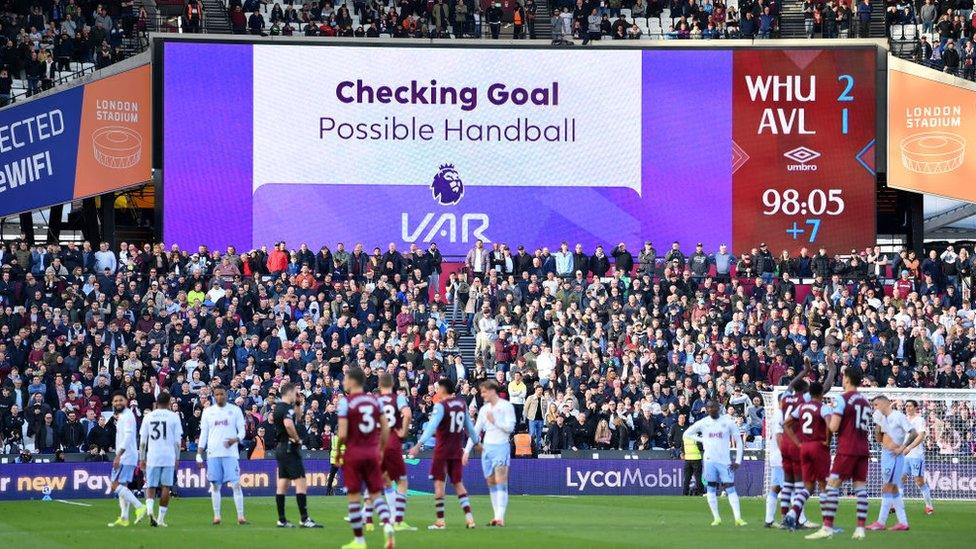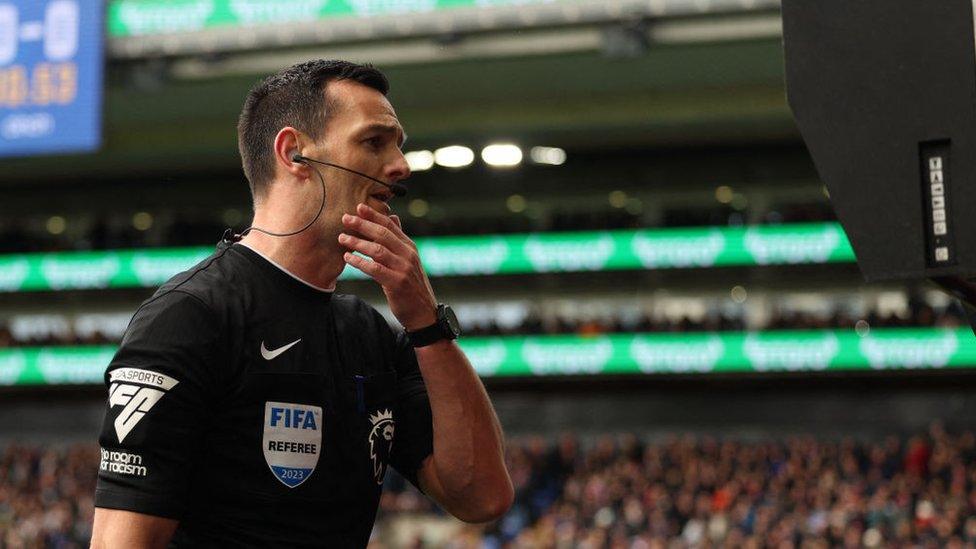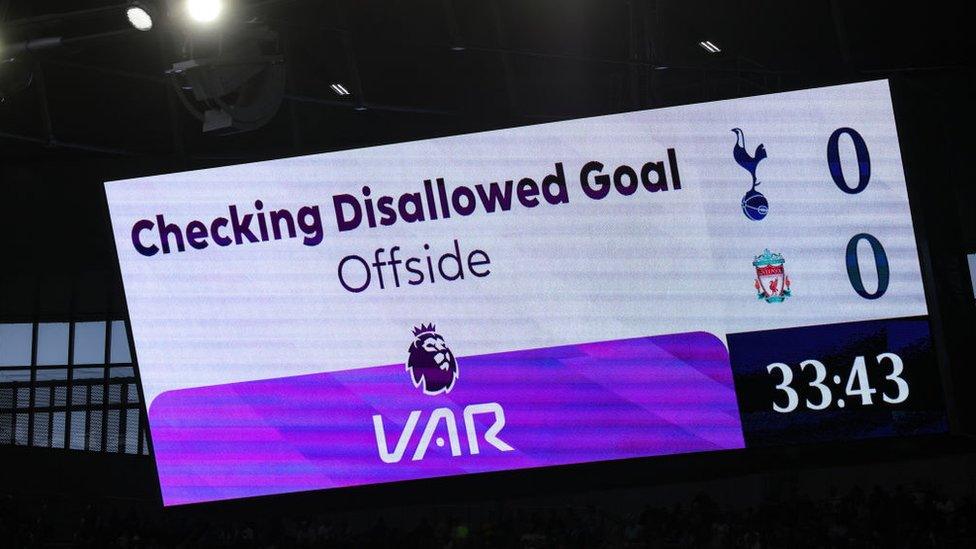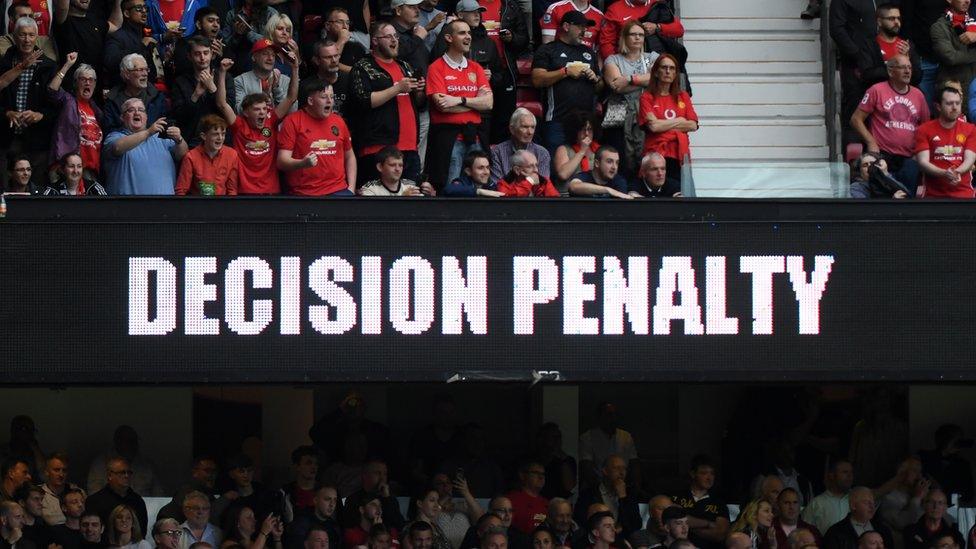VAR: Premier League clubs to vote on scrapping Video Assistant Referee technology
- Published
- comments

Premier League clubs will vote next month on whether to stop using VAR - or Video Assistant Referee - technology in games.
VAR was introduced in the Premier League at the start of the 2019-20 season to help referee decision making in matches.
It's been used to make big calls - like deciding penalties or if goals have been scored fairly - however some teams have complained it has got too many problems.
The Premier League said it "acknowledged the concerns" about VAR but "fully supports" the technology.
Do you think VAR should be scrapped in the Premier League? Take part in our vote and you can also tell us your thoughts in the comments below.
If you can't see this vote, click here.
What is VAR?
WATCH: How does VAR work?
VAR - or Video Assistant Referee - technology only gets involved when officials have made a 'clear and obvious error' in one of four key areas: goals, penalties, red cards and mistaken identity.
Goals - A close offside decision is the most common reason for VAR being used after a goal has been scored, but things like shirt-pulling and other fouls could also see goals disallowed after a VAR review.
Under current rules, there is no margin for error for strikers trying to stay in-line with defenders. If a player is offside by a centimetre or even less, the goal will be ruled out.
Penalties - Penalties can be given or taken away using VAR, but only if there has been a 'clear and obvious error' in the original decision.
It can also be used to award retakes if a goalkeeper leaves his or her goal-line.
Straight red cards - In-game straight red cards for violent conduct and dangerous tackles can be given or reversed using VAR.
However, second yellow cards cannot be given with VAR help.
Mistaken identity - If the referee sends-off or books the wrong player, VAR can correct that decision.
How does VAR work in the game?

The Video Assistant Referees can talk to the on-field referee through an earpiece. If something needs to be looked at the referee will put his hand up to stop play and inform the players that a decision is being reviewed.
VAR reviews the video footage of the incident and advises whether or not action needs to be taken.
If there has been an error, the referee will draw a rectangle with their arms - like a big TV screen in the air - to show they're changing their original decision.
At times when decisions are not obvious, the VAR will instruct the referee to watch a replay on a pitch-side screen. This is known as an on-pitch review.
Referees have been told to avoid checking the pitch-side screen whenever possible. These types of review are known to cause long delays.
What are the criticisms of VAR?

Some fans and football experts aren't happy with VAR.
It can take a while to make decisions using the system and that can disrupt the flow of the match.
There are also complaints that the rules are too strict. Goals can be disallowed for the tiniest of margins.
Others say those kind of reviews are taking the joy out of the game because nobody can celebrate properly until VAR has done its thing.
VAR has also missed or made incorrect decisions during the course of the seasons, resulting in the Head of Premier League referees, Howard Webb having to apologise to clubs for mistakes.

Fans are notified of VAR decisions on stadium screens
All 20 Premier League clubs will vote on the future of VAR at a meeting on 6 June.
Premier League rules state that any rule changes need a two-thirds majority, meaning 14 out of the 20 clubs need to vote in favour of scrapping VAR for it to happen.
